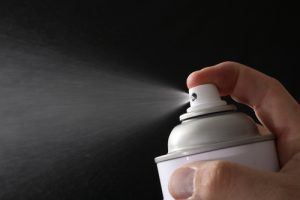How to Dispose of Old Pesticides – Advice from EPA
By Chris Williams on January 27, 2012.
Many of us have old containers of old pesticides sitting on a shelf in our garage or shed. We leave them there because we don’t know what else to do with them. We know we shouldn’t just empty the contents down the drain, but what should we do? Following is advice from the Environmental Protection Agency on the safe disposal of pesticides.
1) The best way to dispose of small amounts of leftover pesticide is to use it up. Apply it according to the directions on the label. If you can’t use the pesticide, maybe a neighbor has a similar pest problem and could use the leftovers.
 2) If you can’t use up the pesticide, check with your local solid waste management authority, environmental agency, or health department to find out whether your community has a household hazardous waste collection program for getting rid of unwanted, leftover pesticides.
2) If you can’t use up the pesticide, check with your local solid waste management authority, environmental agency, or health department to find out whether your community has a household hazardous waste collection program for getting rid of unwanted, leftover pesticides.
3) Never pour leftover pesticides down the sink, into the toilet, or down a sewer or street drain. Pesticides may interfere with the operation of wastewater treatment systems or pollute waterways, harming fish, plants, and other living things.
4) Read what the label on the pesticide container says regarding disposal. Be sure to ask your state or local authorities about any local requirements for pesticide waste disposal. State and local laws may be stricter than the Federal requirements on the pesticide label.
5) If there is no community disposal program available, follow the label guidelines for disposal. In general, to dispose of less than a full container of a liquid pesticide, leave it in the original container with the cap tightly in place. Wrap the container in several layers of newspaper and tie it securely. Put the package in a covered trash can for routine collection with municipal trash, or take it to a permitted landfill (unless your town has other requirements).
6) For packages of dry pesticide (dust or granules), wrap the package in several layers of newspaper (or place the pesticide in a tight carton or bag), and tape or tie the package closed. Put the package in a covered trash can for routine collection. NOTE: No more than 5 pounds of dry pesticide at a time should be thrown out with the regular trash in this manner.
7) Even empty pesticide containers require special handling. An empty container can be just as hazardous as a full one because of residues left inside. Never reuse an empty pesticide container. An empty pesticide container should be rinsed three times and the rinse water drained back into the sprayer or container used to mix the pesticide. Finally, use the rinsewater as you did the pesticide, applying it according to label directions. Do not puncture or burn a pressurized container like an aerosol – it could explode. But you should cut or puncture other empty metal or plastic containers to keep someone from reusing them. Wrap the empty, rinsed container and put it in the trash. Do not put the empty pesticide container in a recycling bin unless the label specifically states that the empty container may be recycled after cleaning.